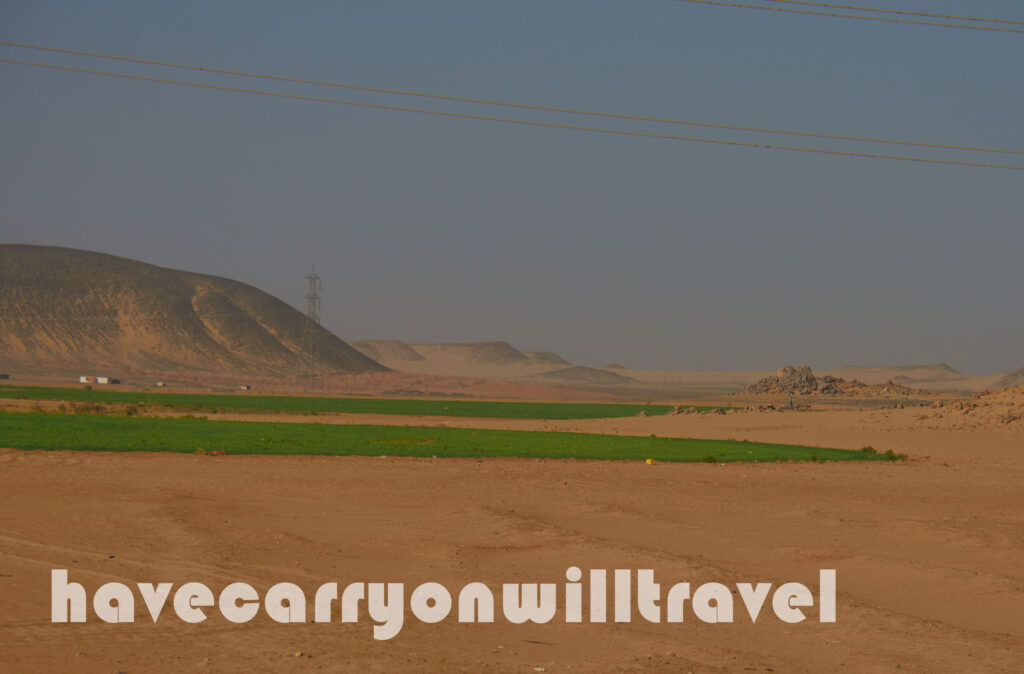Here we sit in a 5 star hotel in Aswan waiting for a plane ride back to the chaos of Cairo. The room temp is a 28C. It is amazing how the body adapts. Several days in the outdoors at 30C+ and a temperature that is normally much too hot is quite comfortable.
We drove through the Nubian Desert, which is part of the Sahara Desert. It is different kind of desert compared to Namibia. Tan coloured sand with black rock outcroppings every so often. It is mostly flat, whereas in Namibia, it is quite undulating.

The Egyptian government is heading up a project called The Desert Land Reclamation Project. They are constructing some 60 km of canals to carry water from the Nile and Nasser Lake to irrigate agricultural land. Crops are growing in the sand, using great arms to water them. Wheat is the predominant crop, which resulted from the inability to obtain wheat due to the war in the Ukraine. The crops are mostly large circles as the irrigation arms move in a circular fashion. If you check out Google Maps, just north of Abu Simbel, you can see how many crop circles there are. Just think if the whole desert were to be growing crops, the food shortage would be history!

Many lunches and suppers are a choice of fish, chicken or beef. Either grilled or tagine. Tagine, chicken say, is pieces of chicken cooked in a small clay pot in broth, or gravy, very similar to a stew. Tagine is served with rice and cooked veggies. The meals are usually also served with appetizers of bread, tahini, eggplant and some soup. Too much food!
My favourite refreshment here is a lemon mint drink. Basically, lemonade with mint and a touch of sugar. Very delicious after a hot day in the sun touring temples.
Here in Egypt, paying for the use of toilets is the norm. Not much makes me annoyed when we travel, but this practise does. We stop at a “rest stop” on the way to Abu Simbel. I think the owner makes more money on the toilets than he does selling coffee, trinkets, chips and chocolate bars. I can see the reasoning behind this model, but I do not like it. In a museum or temple, sometimes there is a person handing out TP for 5 or 10 Egyptian Pounds (25 or 50 cents), so I pay. This person may not get a wage and his earnings are what he collects in a day, which might be quite a lot at a busy temple.
On our group tour we get up early. I think the earliest is at 5:00 for a departure at 5:30 am, with breakfast after we get back. This early hour is to watch the sunrise at the Temple of Karnak. We are the only group there at 6:00 when the gates open, take beautiful photos and we are on our way out when the masses arrive. Our intrepid guide is very good at getting us to temples before the main rush, so for that I will get up early.

We stop at two quarries on our travels, one limestone and one granite. The limestone quarry is beside the Nile and we see where great blocks were chiselled out and moved down to the water’s edge. The granite quarry is in Aswan and away from the river slightly. It is the quarry where an obelisk for Hatshepsut was being carved when it cracked and thus discarded. It is still laying in the quarry after all the centuries.
